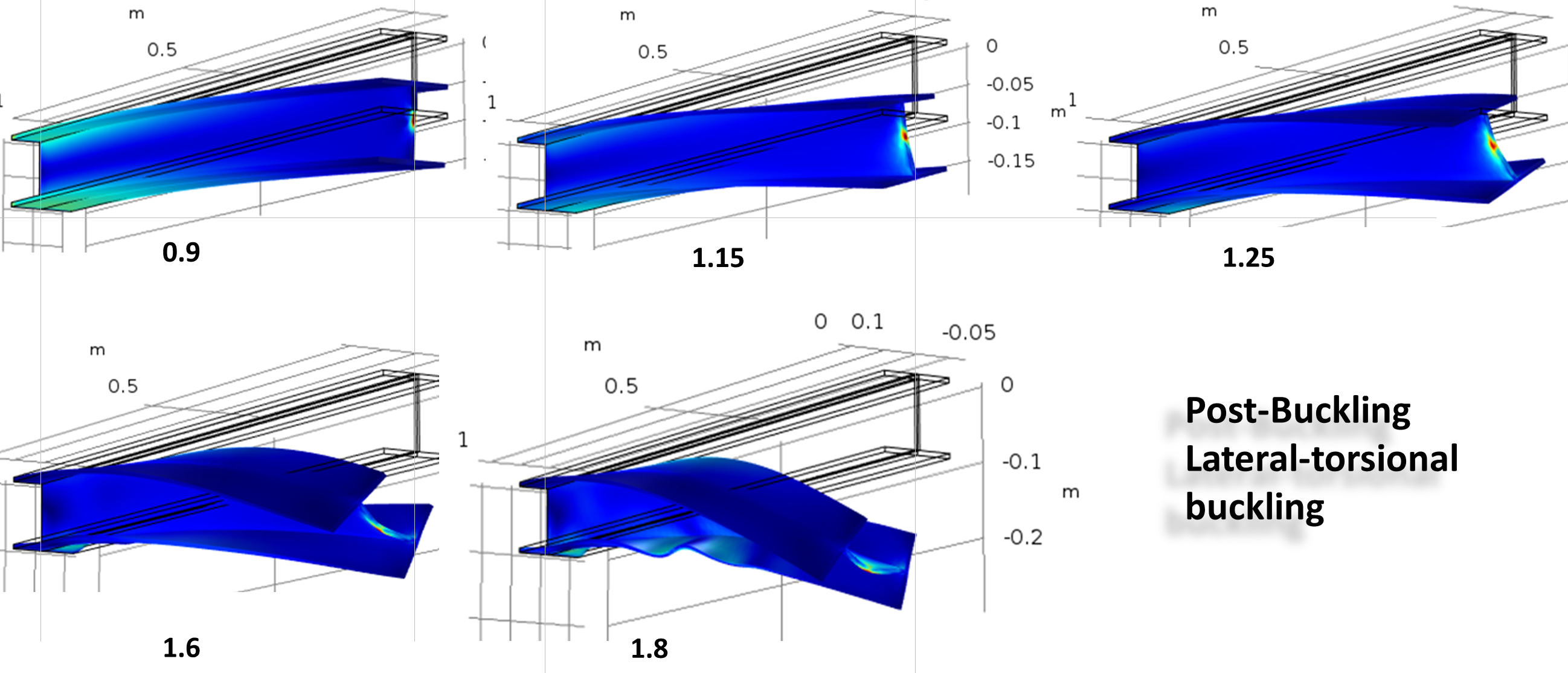CIV-E4100 - Stability of Structures D, 01.03.2021-18.04.2021
Kurssiasetusten perusteella kurssi on päättynyt 18.04.2021 Etsi kursseja: CIV-E4100
Osion kuvaus
-
Stabilty of Structures
This course name is the stability of elastic structures.
The following fundamental two questions are addressed:
1) Is the equilibrium stable or not?

and
2) What type of post-buckling behaviour?
The Figure bellow represent a post-buckling FE-analysis of an I-Beam loaded with a centric transversal tip-load (Computation D. Baroudi, 2019)

Content
0. Basic conceptsEquilibrium, StabilityThe energy criterion of stability- Flexural buckling (nurjahdus)
- Lateral-torsional buckling (kiepahdus)
- Torsional buckling (vääntönurjahdus)
- Buckling of thin plates
- Buckling of shells (lommahdus)
----------
List of the six homework and assignments to be done during this course:
1. week 1:- Fundaments of Elastic Stability
2. week 2: - Flexural stability loss
3. week 3: Lateral torsional, pure torsional and combined flexural-torsional buckling
4. week 4 - Computational Stability Analysis. Application example: Lateral torsional buckling & post-buckling
5. week 5 - Buckling of plates
6. week 6 - Buckling of shells (only one exercise)
------------
Literature
- CHAI H. YOO & SUNG C. LE . STABILITY OF STRUCTURES - Principles and Applications, 2011 Elsevier e-textbook (our course main textbook)
Additinal reading: (not compulsory)
- S.P. Timoshenko & J.M. Gere. Theory of Elastic Stability. 2nd Ed., 1985. (Classical textbook)
- Juha Paavola. Structural Stability. Lecture note - 2018 (pdf in MyCourses) . This is a must-read for those interrested in general and systematic energetic approach for elastic stability.
- Structural Stability (Lecture notes by Prof Markku Tuomala, in Finish). This is a complete textbook with plenty of solved exercises.
- Lecturer weekly provided additional material
- Some article fron NATURE for curious people
2)- surface instability idem. https://mycourses.aalto.fi/pluginfile.php/1260824/course/section/158919/Surface_wrinkling.pdfPassing the course
- Having obtained from HW-assignements >= 40% of compulsory points togather with passing successfully the written exam.
- when the written exam is successfully passed, then the homework points rise the examination grade (arvosana) at most by 1 grade if homework points >= 2/3 of homework compulsory maximum points.
- There will be organised only two examinations
Assignments
- readings from textbook and the additional lecturer's pdf-material
- doing weekly homework (probably five topics) student delivery: solutions
- one computer analysis: linear buckling and post-buckling analysis: student delivery: solutions and report
The purpose of assignments is to train and deepen active learning. All the cession of exercises are guided.
=================================Lecturer
Djebar BAROUDI, Dr.LecturerAllto University
